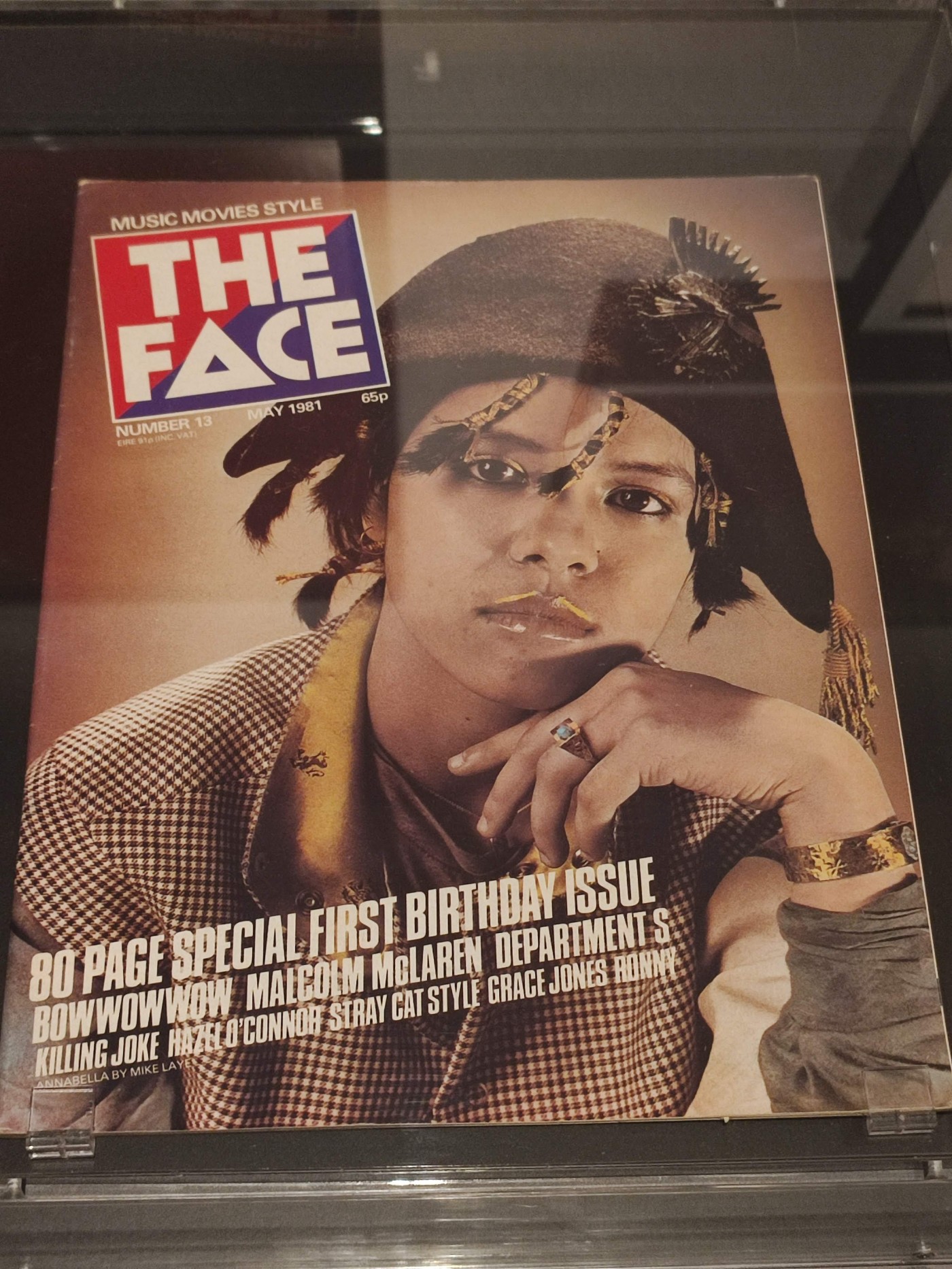- youtube
- bluesky
- Home
- About
- Costume Journal
- Membership
- Conference & Events
- Grants & Awards
- News & Social
In this week’s blog, Costume Society News Editor Dr Babette Radclyffe-Thomas reviews The Face Magazine: Culture Shift exhibition at the National Portrait Gallery.
The National Portrait Gallery is the first major museum to focus on the fashion photography and iconic portraiture captured for The Face, an uber cool British magazine that has had a lasting impact on youth culture. The Face was launched by Nick Logan, an established magazine editor who spotted a key gap in the market and invented a new genre of publishing, the style magazine. Known for its striking design, bold content, The Face pioneered cutting edge fashion photography and played a key role in launching careers of many renowned fashion models, photographers, stylists and designers.
“Essentially I wanted The Face to be good journalism and great photography: a combination. A magazine in the grand tradition of photo journalism to document extraordinarily creative times,” Nick Logan said, in a quote accompanying issue 1 of The Face.
The exhibition is curated by Sabina Jaskot-Gill, Senior Curator of Photographs at the National Portrait Gallery, together with Curatorial Consultants Lee Swillingham, former Art Director of The Face from 1992 to 1999, and Norbert Schoerner, a photographer whose work appeared in The Face throughout the 90s and 00s.
“The Face has been a trailblazing title since 1980, not just documenting the contemporary cultural landscape, but playing a vital role in inventing and reinventing it. Within its pages, The Face has produced some of the most innovative fashion and portrait photography of its time- the magazine always allowed its contributors the creative freedom to react against the prevailing mood, to create a shift in culture. I’m delighted to bring together the most comprehensive survey of the magazine’s photographic imagery to date, and would like to thank my co-curators Lee Swillingham and Norbert Schoerner for all their work in making this possible,” Sabina Jaskot-Gill said.
The exhibition aims to explore the impact of The Face on the 1980s, 90s and 00s and more than 200 prints by over 80 photographers are on show, with many images exhibited for the first time separate from the pages of the magazine in which they first appeared. There are photographs, magazine covers, magazine spreads and film throughout and photographers include David LaChapelle, Corrine Day, Sheila Rock and Stéphane Sednaoui.
The expansive exhibition is organised thematically and chronologically, starting with the founding of The Face. The general pathway of the exhibition is chronological, with many sub-themes throughout: themes include Rock’s Final Frontier, the world’s best dressed magazine, Buffalo: looking good is a state of mind, the battle for planet fashion, studio culture, this is the modern world, Brit up your ears, Glamour is back, technicolour futurism, a taste of arsenic, hyperreal, where next for youth culture, sound of the streets and Culture IRL: a new era.
Throughout the exhibition, nearly every item is accompanied by detailed quotes from those involved in the magazine’s production which give fascinating insights into the production process. Images are multi-sized, ranging from post-card size to being blown up across a wall, while rooms are painted in bold, bright colours, all adding to the creative vibe of the magazine.
One room is dedicated to Ray Petri’s ground-breaking collaboration with photographer Jamie Morgan and the ‘Buffalo’ group of creatives which saw a new distinct approach to men’s styling.
Changes in culture are clear to see in the magazine’s pages: the 1990s saw the rise of acid house, Brit pop music in the magazine’s pages, as well as the move to a more gothic aesthetic on early 90s catwalks by designers such as Alexander McQueen appeared in magazine spreads by stylists such as Isabella Blow. The impact of post-production and Photoshop in fashion imagery is clear to see, before the exhibition concludes by covering the relaunch of the magazine and changing youth culture in a time of style magazine saturation and the move to digital.
The exhibition runs until 18 May 2025.

Photo courtesy of Natascha Radclyffe-Thomas.